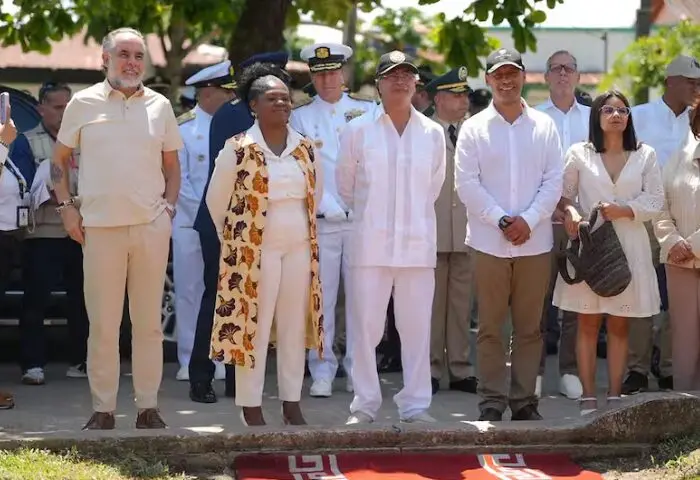Colombia Rejects Peru’s Claim to Santa Rosa Island Amid Rising Tensions
Colombian President Gustavo Petro announced on Thursday that his government does not recognize Peru’s sovereignty over Santa Rosa Island, a disputed territory located near the tri-border zone with Brazil. From Leticia, a Colombian city facing the island, Petro accused Peru of violating the 1934 Rio de Janeiro Protocol, which concluded a conflict between the two nations and set river-based boundaries, reports 24brussels.
President Petro criticized Peru’s unilateral establishment of the Santa Rosa de Loreto district in June, arguing that the island came into existence after the 1929 assignment of islands and must be evaluated together. “The so-called Santa Rosa Island has not been assigned to either republic,” Petro stated, asserting that Colombia possesses technical and scientific evidence indicating that the island is not an extension of Peru’s Chinería Island.
Petro highlighted that Article 12 of the Rio Protocol ensures free navigation on the Amazon River and criticized Peru’s requirement for vessels to register in Santa Rosa, claiming it violates this principle. He warned that such actions could jeopardize Leticia’s position as a commercial port and threaten regional integration and local economies.
Additionally, Petro dismissed the legitimacy of Peruvian authorities operating on the island, describing their presence as “unacceptable” and detrimental to border communities. He announced plans to reactivate the Permanent Joint Commission for Border Inspection (COMPERIF) and accepted Peru’s proposal for bilateral discussions scheduled for September 11–12 in Lima.
The dispute occurs amid heightened tensions over natural resource management and strategic territory in the Amazon. Petro warned that unresolved border disputes could empower organized crime, especially drug trafficking networks that exploit the region’s weak state presence.
On the other hand, Peru maintains that Santa Rosa has always fallen under its jurisdiction, referencing the Salomón-Lozano Treaty of 1922 and subsequent boundary demarcation efforts. In response to Colombia’s claims, the Peruvian Foreign Ministry has issued a vigorous protest, reaffirming its sovereignty and branding Colombia’s assertions as “misinformed and unfounded.”
The island houses approximately 3,000 residents, who have historically depended on Leticia for education, healthcare, and trade. Local leaders assert that the recent administrative designation aims to enhance public services, not to incite territorial conflicts. Colombia, however, contends that any newly formed islands require mutual agreement, as stipulated in the Rio Protocol.
Petro’s decision to move Independence Day celebrations from Boyacá to Leticia has been interpreted as a symbolic assertion of Colombia’s sovereignty. “Leticia is Colombia,” he declared, cautioning that Peru’s actions could “erase it from the map as an Amazonian port.”
While both countries have expressed a willingness to engage in diplomacy, the situation has rekindled historical tensions rooted in the 1932–33 Leticia War. Analysts warn that using social media to communicate foreign policy stances could escalate the conflict and urge both parties to prioritize dialogue and legal frameworks.










